Women ‘blue’ and bleeding: Witches in contemporary East Indonesia
**Originally published on the ANTH424: Anthropology of evil blog, 22nd June 2018**
Written and visual accounts of witches have changed dramatically across cultures and time. Witches were once described by Europeans in the sixteenth century as old and evil, with wrinkled and deformed features, and are now being depicted in contemporary popular culture as feminist figures who have a pale complexion, and are glamorous and beautiful [1][2]. The visual traits of contemporary witches of East Indonesia are quite distinct from what we encounter in these European historical accounts and in popular culture.
Witches, known as dukun in Indonesia have played a fundamental role in the lives of many East Indonesians, and have impacted how they structure their communities[3]. In this post I analyse how their visual traits and characteristics relate to Mary Douglas’s[4] ideas about the relationship between the body and sociality, purity and pollution. Douglas argues that the body is a symbol of society that requires order and classification, and by referring to East Indonesian witches, one can distinguish this.
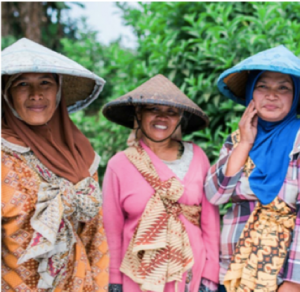 In some areas of East Indonesia, there are no distinct visual traits that set apart witches within their communities. Konstantinos Retsikas ethnography [3] concerning sorcery in East Java, Indonesia, noted that both the instigator and the sorcerer remain hidden in fear of being killed. People can only rely on rumours and whispered accusations to identify witches within East Java. As a witch, blending in is the safest approach. At the same time, they share the same motives of envy, greed and jealousy that is common in everyone, challenging people’s ability to accurately recognise the witches within their community.
In some areas of East Indonesia, there are no distinct visual traits that set apart witches within their communities. Konstantinos Retsikas ethnography [3] concerning sorcery in East Java, Indonesia, noted that both the instigator and the sorcerer remain hidden in fear of being killed. People can only rely on rumours and whispered accusations to identify witches within East Java. As a witch, blending in is the safest approach. At the same time, they share the same motives of envy, greed and jealousy that is common in everyone, challenging people’s ability to accurately recognise the witches within their community.
Although due to this lack of distinct visual traits, Retsikas found that in East Java sorcery accusations always tend to focus on one’s relatives, neighbours, friends and work colleagues. Convivial intimacy is risky and choosing one’s friends wisely is critical. Hence, their unidentifiable traits protect some witches, but also leads to uncertainty and moral panic amongst the people of East Java. The unmarked body of witches impacts the communities ability to keep things pure and in order, affecting how members of East Java respond to one another in times of conflict. Thus, this reflects on Douglas’s idea concerning how the body, whether marked or unmarked, is a key symbol in identifying how a community functions.
A key trait prominent in Kodi female hereditary witches from the coastal villages of Sumba is their association with “blue arts” [5].
In Janet Hoskins ethnography, she recognised the transformation of Kodi women into witches led to the appearance of the shade blue in and around their body. As she mentioned, “Hereditary witches have “blueness in them”, they are “bluish people” (tou morongo) whose very blood is believed to be in some way poisonous to others… Blueness is said to be deep inside the liver (ela ate dalo) of a witch, a kind of poison that can affect others even without her willing it” [5]: 322. This poisonous trait is a reflection of pollution and signifies the darkness within hereditary witches. When they are exposed to this powerful trait that can harm the community and their formal structure, it pushes witches into the margins. “Blue arts” or “blueness” found internally and externally in hereditary witches sets them apart from other Kodi women, making them vulnerable to discrimination by their community, and powerful at the same time. Thus, their polluting body has the potential to disrupt the communities social structure and create fear amongst people.
Menstrual blood is a powerful characteristic associated with witchcraft.
Both Konstantinos Retsikas and Janet Hoskins ethnographic study explore the significance of menstrual blood and how the substance has impacted how some villages in East Indonesia function today. In the Huaulu community, Hoskins found that they have strict menstrual taboos to protect their people. Menstruating women are required to stay in menstruating huts away from the men until their cycle has finished. Menstrual blood is believed to be a dangerous and contaminating substance of witches, and can lead to men becoming extremely ill if they come in contact with it. Hence, Huaulu women accept this menstrual taboo as it is seen as a way of protecting the men within their community, and keeps their village pure and clean.
Huaulu strict taboo and the significance of menstrual blood for many other East Indonesian villages relates to Mary Douglas’s idea about the relationship between the body and sociality, purity and pollution. According to Douglas, “The body is a model which can stand for any bounded system”[4]: 115. The bounded system in Huaulu expresses anxiety about the body and its fluids, while at the same time it administers care and protection for the group. Some argue that specific parts of the body, particularly menstrual blood symbolises “dirt [that] offends against order”[4]: 2. Although in Huaulu, their community members are effectively engaging with this polluted and “dirty” substance by creating strict taboos around it, leading to the development of relationships and the strengthening of social order. Therefore, the significance of menstrual blood and its association with witches impacts how Indonesians culturally construct their communities.
Although there are no distinct traits that set apart Indonesian witches in some areas, they continue to play a fundamental role for numerous citizens. Their presence within key substances, and power to cause positive change and conflict within one’s life does not go unnoticed. At the same time, their features relate to Mary Douglas’s ideas of the relationship between the body and sociality, purity and pollution in many ways, affecting how people of East Indonesia function in contemporary society.
Written by: Pulegaomalo Muliagatele-Carter
References:
[1] Briggs 2002: p.15 in Mencej, M. (2007) ‘7- Social Witchcraft: Village Witches’. In: Styrian Witches in European Perspective: Ethnographic Fieldwork, London: Palgrave Macmillan, pp. 313-346.
[2] Buckley, C. (2017) ‘Witches in Popular Culture’. [online]. The Open University. Available from: http://www.open.edu/openlearn/history-the-arts/literature/witches-popular-culture. [Accessed 14 June 2018].
[3] Retsikas, K. (2010) ‘The Sorcery of Gender: Sex, Death and Difference in East Java, Indonesia’. South East Asia Research, 18(3), pp. 471-502.
[4] Douglas, M. (1966) Purity and Danger: An Analysis of Concepts of Pollution and Taboo. London: Routledge and K. Paul.
[5] Hoskins, J. (2002) ‘The Menstrual Hut and The Witch’s Lair in Two Eastern Indonesian Societies.’ Ethnology, 41(4), pp. 317-333.
Vaccination debates and the pain of dividuality
**Post originally published on Corpus: conversations about medicine and life, August 7, 2017; with thanks to Sue Wootton for editing and for permission to republish**
Dividuality: “the close proximity and unexpected pull of others in one’s life” (Garish Daswani 2011).
 My ears are full of screaming: the name-calling, the CAPS, the exclamation points!!! Whenever vaccination comes up online, and comments are enabled, the conversation quickly devolves into an extremity of outrage and vitriol that reads to me like ‘moral panic.’
My ears are full of screaming: the name-calling, the CAPS, the exclamation points!!! Whenever vaccination comes up online, and comments are enabled, the conversation quickly devolves into an extremity of outrage and vitriol that reads to me like ‘moral panic.’
Coined in the late 1960s, the term ‘moral panic’ makes no judgement on the value of the issues under discussion. Rather, it highlights the social processes in the associated public discourse: the way that story, meaning, and affect coalesce around a particular social problem. Untangling an objective sense of risk from this is nigh on impossible. Besides, people are doing stupid, risky, and harmful things to each other, directly and indirectly, all day long, and in every part of the world. The question becomes not what to think of anti-vaxers, but why the panic about this particular issue, why here, and why now? I believe the answer is not purely medical, but also social and moral.
In matters of morality the contemporary Western world cries ‘choice’ until the word is nearly meaningless. Liberalism snuggles up next to secularism. We fiercely defend our (and others’) rights to make personal decisions, based on personal beliefs. What the issue of vaccination makes horribly clear is the reality is that you can make your personal decisions, based on your personal beliefs, and they can still kill my child. There are limits to our liberalism. Is this the sore spot that the vaccination debate is poking its sordid fingers at? That the personal is social, always.
 Arthur Kleinman – psychiatrist, clinician, social anthropologist – discusses morality by looking at “what matters most” or “what is at stake”. In matters of health this includes relationships, personal values and identity. What produces such heat in the debate about vaccine-preventable diseases is that it’s not only individual biographical identities that are threatened, but deeper cultural constructions of the ‘self.’ What the debate specifically grates on is our sense of ourselves as individuals: our clung-to Western vision of the autonomous, bounded, individual self. Silos. Self-governed islands.
Arthur Kleinman – psychiatrist, clinician, social anthropologist – discusses morality by looking at “what matters most” or “what is at stake”. In matters of health this includes relationships, personal values and identity. What produces such heat in the debate about vaccine-preventable diseases is that it’s not only individual biographical identities that are threatened, but deeper cultural constructions of the ‘self.’ What the debate specifically grates on is our sense of ourselves as individuals: our clung-to Western vision of the autonomous, bounded, individual self. Silos. Self-governed islands.
Social anthropologists have compared the different notions of selfhood and personhood that emerge in diverse cultural settings. In many African communities, for example, ethnographic data paints a picture of the self as partible (capable of being divided), and porous (to both physical and spiritual substances) – not ‘individual’, but (according to ethnographers like Girish Daswani) ‘dividual’. This is quite a contrast to the ‘buffered self’ that is a feature of the Western secular age, where the ideal of healthy interpersonal relationships involves having strong interpersonal boundaries.
The vaccination debate invokes a sense of contamination and threat from other human beings. But bodies are never just bodies. They are the site of densely-packed social meanings, and the inspiration for the most accessible and powerful metaphors for pressing existential concerns. Thus the vaccination debate is not only expressive of anxieties about our biological health, but also about our social existence. As each image of an ailing child looms large on our screens, how outrageous it seems to have to acknowledge ourselves as herd animals in this way – how sickening and scary that what matters most to us is at the mercy of those around us. How intolerable. How basically, inescapably, human.
Dividuality cannot just be the folk theory of some cultures… it is the basic reality of all communities. There is an Irish proverb I have always liked:
“In the shadow of each other we must build our lives.”
Though bleak, to me its comfort is in the embrace of that inevitable entanglement with other selves. You will shadow me, just as I will shadow me. I can no sooner extract my life from the influence of others’ dreams, decisions, and faults than I can remove myself from the biological systems of immunity and disease. A relinquishing of the singular pronoun is needed: I, we, are in so many ways collective.
 Robyn Maree Pickens’ beautiful essay on bees (published in Turbine/Kapohau 2016) evokes something of this; the sense of ecological interconnectedness which must be cultivated against alarm bells. She concludes by beseeching us to attend to the “nested lives of others.”
Robyn Maree Pickens’ beautiful essay on bees (published in Turbine/Kapohau 2016) evokes something of this; the sense of ecological interconnectedness which must be cultivated against alarm bells. She concludes by beseeching us to attend to the “nested lives of others.”
The air of panic that hovers over the vaccination debate reflects the existential nature of the concerns being expressed: concerns over the threat of vaccine-preventable diseases to the physical wellbeing of our children; threats also to our clung-to visions of ourselves as bounded individuals. We struggle in the grip of an impossible longing for both freedom to make our decisions and freedom from the effects of others’ decisions. Yet this is the shadow-dance we live in. Confronted with a perfect biological metonym for this crumbling dream of moral autonomy, it seems we can do nothing but scream.
Written by: Dr. Susan Wardell
References:
- Cohen, S. (2002). Folk devils and moral panics.
- Daswani, Girish. “(In-)Dividual Pentecostals in Ghana.” Journal of Religion in Africa41, no. 3 (2011): 256–79.
- Kleinman, Arthur. “Caregiving as Moral Experience.” The Lancet 380, no. 9853 (November 9, 2012): 1550–51. doi:10.1016/S0140-6736(12)61870-4.
- Pickens, R. M. (2016). We ask so much of them
We are ritual creatures
The 3 Minute Thesis competition is a lively annual event. This year Marshall Lewis, a Phd student in Otago’s Social Anthropology programme, competed in the University finals. We thought we’d share the content of his excellent presentation on ‘Ritual Design’ with you! …
“If you have goals that are important to you – and I bet you do – then you may want to design your rituals to support your goals. That’s the main idea behind my project.
So, very quickly: what do I mean by ritual, why use it and how might we design ritual?
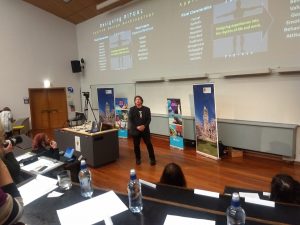
Marshall Lewis delivering his presentation
Think of rituals as actions that embody and express your beliefs and values – you live your beliefs and values through ritual – perhaps not consciously. You may have waking rituals, hygiene rituals, eating, commuting, working, shopping, pre-game, post-sex, religious ritual – if you’re religious – even binging on Netflix can be ritual-like.
Why is life so ritualised?
Ritual scholarship is extensive and contentious. I’m focused on two basic propositions: First, there are discernible, family characteristics of ritual – some listed here – and secondly – and here’s why you should care – rituals work. Experimental psychologists have been demonstrating what coaches and drill sergeants have long known: rituals have real impact. For example, they can decrease anxiety, reduce grief, alleviate disappointment. Essentially, they can align and reinforce our beliefs and values.
And knowing that rituals work is real and useful knowledge. What might it look like to take this knowledge seriously: to apply ritual as a strategy or technology to support one’s goals and aspirations? That’s what my project is about. I am applying insights from the interdisciplinary study of ritual — from anthropology, organisational studies and religious studies – to do three things: to defend a conception of ritual as something to be designed; to evolve a practical method for designing ritual, and to apply this method in real-world environments.
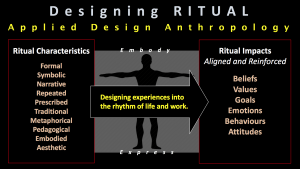
Competitors in the 3 Minute Thesis competition are allowed a single powerpoint slide to accompany their 3-minute presentation, and this was Marshall’s image.
Two quick examples: First, I work in a large company that wants a collaborative culture, where people feel empowered to shape the future of the organisation. The question becomes: How might we design organisational rituals such as team meetings and problem-solving sessions if our goal is a collaborative culture?
Secondly, my youngest daughter is starting law school later this month, and she’s designing rituals to help maintain a healthy lifestyle during that period of intensity.
The ritual design method is straight forward, although far from easy. First, clarify your goal and the beliefs and values you want to reinforce (easier said than done!). Then, you design your rhythms and activities using the key characteristics of ritual as design principles. It’s a creative process, though analytically derived.
We are ritual creatures. Ritual is one of the key strategies humans use to bring some order and method to the challenges and chaos of life.
Good luck with your goals! And consider how your rituals can support you!”
“I did this, and this is anthropology!”: Interning at a Community Non-Profit
Though many of us who study social anthropology have a keen interest in helping others, from an uncomfortable seat in a crowded lecture hall it can often be difficult to envision how skills being learnt in the classroom might be applicable in a broader setting.
Here postgrad Social Anthropology student Jordan Webb interviews undergrad student Mika Young[1], about their experience participating in the new HUMS301 humanities internship practicum where they had a chance to translate anthropological theory into ‘real’ world practice at a community organisation; Life Matters Suicide Prevention Trust.
Q. Could you briefly explain the humanities internship paper?
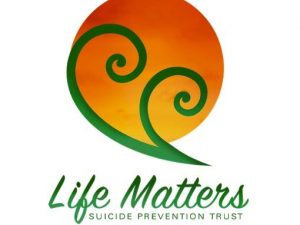 A. I guess it’s about applying what you have learnt in class to a practical context. Every student will go out to an organisation in the community and do some sort of project for them, whether it is research or a practical project. Mine happens to be a mix between the two. Since I already have experience working with organisations in the community, I am helping Life Matters Suicide Prevention in creating a new volunteer training programme.
A. I guess it’s about applying what you have learnt in class to a practical context. Every student will go out to an organisation in the community and do some sort of project for them, whether it is research or a practical project. Mine happens to be a mix between the two. Since I already have experience working with organisations in the community, I am helping Life Matters Suicide Prevention in creating a new volunteer training programme.
Q. What initially drew you to this internship opportunity?
A. I often find it difficult to communicate with people about what anthropology can offer outside of research. So I thought because I am already interested in pursuing community work after my degree that this paper would be a good chance to learn how anthropology works in a practical sense. To get some experience in the area, and then be able to communicate to other organisations, this is what I have done and this is how I can help you.
Q. How did you use your anthropology major during your placement?
A. I drew a lot from Wollcot’s ‘3 E’s’ – experiencing, enquiring, and examining[2]. I think it is really useful drawing on your own experience, doing the research to make sure you are well informed, and also talking to people and including their experiences. So for the organisations I researched on behalf of Life Matters, it was important to hear their perspectives on their existing training programmes. That’s how I try to see anthropology, and when I am going into an organisation I make sure I’ve covered these three aspects
Q. There has been a lot of talk in the tertiary teaching community about capstone papers which consolidate entire undergraduate experiences, how does this relate to your experience?
A. I’d say very well in the final semester of my degree. That was another motivating factor as I think it helps to bridge between academic and public world beyond, particularly with anthropology as it can be difficult to communicate what your skills are. It gives you an example of, ‘I did this, and this is anthropology’!
Q. How has this experience helped you to communicate the potential applications of anthropology?
A. It’s still a challenge! I think this also a difficulty discipline wide, translating anthropology for a the general public. But it is definitely nice having this concrete example of how a practical task could be approached from an anthropological perspective. For example, one thing that I was able to offer was approaching other organisations and translating the knowledge they had already developed, in combination with my own volunteer experience, and contributing an anthropological understanding of why this information is important. It helps the organisation as much as it helps me, providing them with a new perspective.
Q. What was your overall impression of the internship and paper?
A. I thought the biggest challenge would be making the paper count toward my anthropology major, but that aspect seems to have been quite seamless. In terms of, workload, the initial groundwork and planning took a lot of time and effort, but after that three week period it became a lot easier to manage my own workload as I became more familiar with the role and the organisation.
Q. Would you recommend the paper to other students?
A. Definitely! I think it is good practice to make those conceptual links between what anthropology is in the classroom and how you can apply that to different situations. I think a lot of students struggle because anthropology is so broad, everything can be anthropology if you want it to be! So the paper helps with developing both anthropological skills and real world skills, and being able to keep an open dialogue with organisations about how anthropology can be used to help them.
A. Anyone can do the internship, but being open to adapting, developing communication, and being willing to learn will all add to the value of the paper and the role. The advice I would give to others would be to find an organisation that suits your interests and experience, and find out what works best for you.
***
Many of us are interested in translating anthropology: imagining how we might be able to benefit our communities once we finally graduate! As Mika has suggested, the humanities internship paper might be one of the ways to help negotiate this transition, and to develop and refine ethnographic skills through sharing their application with others.
As Mika remarked, “The tools we are learning are helpful in an academic context but they are also just life skills! It is challenging finding applied uses for anthropology, but ultimately it is about being human, right?”
[1] Mika Young was also the winner of the 2018 Sites Senior Student Essay Competition.Their winning essay is entitled ‘Tā Moko and the Cultural Politics of Appropriation’, and will be published in the 2018 December issue of Sites.
[2] Wolcott, H.F. (2008). Ethnography: A Way of Seeing. 2nd ed. Blueridge Summit: Altamira Press.


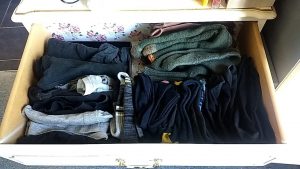
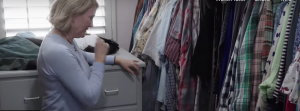

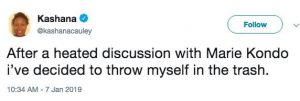

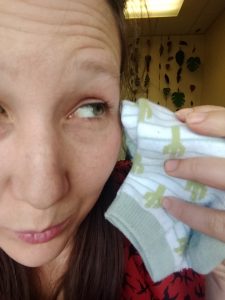
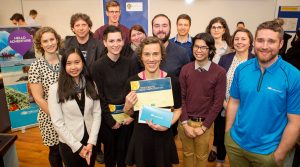

Easy Words: An Open Letter to Critic
Posted on by smisu13p
Dear Critic – Te Arohi – Student Magazine,
Title image from the Critic article [25th Feb 2019]
To be honest, I think we were more perturbed about the handful of our papers that you decided were too ‘difficult’ to include.
Critic’s dabbles in degree planning… featuring ANTH325 (Death, Grief, and Ritual) and ANTH327 (Anthropology of Money)
But it makes me think a little more about why we study what we do, at Uni. Why would we want a degree that was ‘easy’? Critic’s analysis of a dream degree holds some internal contradictions about achievement, it seems to me…
The article is a ‘how to’ guide for the minimum effort possible to achieve a qualification. This is erroneously calculated of course: all 18 points at the University of Otago are designed to be around 10 – 15 hours of both contact and non-contact time per week. Papers pass through a rigorous review to ensure this – ask the OUSA education officer, who sits on these Divisional Academic Committee Meetings!
Social anthropology papers include large amounts of background reading, ethically approved fieldwork and independent study and analysis, alongside contact hours – skipping over these elements of learning are not the pathway to an A+ but perhaps a C.
But let me return to what it is that we value in our degrees. Is it the piece of paper and a string of Cs? Or is it the experience, the self awareness and critical insights that a capacity for life long learning instills in us? Critic has one answer, but a lot of my own students have another:
Another paper offering diverse case studies and critical thinking
In fact, dear Critic, it is thanks in fact to these very (critical thinking) skills, that our students have been so quick to place your article into its wider socio-political context – an ideological shift towards devaluing the humanities.
In Facebook comments and hallway conversations, many made a clear and disgruntled connection between this article and a bigger trend of “arts bashing”, and jumped to defend their degrees accordingly. One recent BA (social anth) graduate shared:
Another BA(Hons) social anth graduate says:
Yet another affirms that the experience hinges on if you “take the time to really make an effort”. Perhaps ‘easy’ is an approach, rather than a characteristic of any one paper or degree.
Graduation 2018: Prof Ruth Fitzgerald standing with BA (Hons) Social Anthropology graduate Jennifer Bell. Jennifer was offered a job at the Ministry of Justice, before she had even finished the year.
So let me encourage and admire all of our past and present students who have worked hard to engage meaningfully with their studies, and who have achieved distinctions like local and international scholarships, and awards for their dissertations and conference presentations. Not to mention all of those marvellous transcripts full of B’s and A’s, achieved through hard work, integrity of purpose, and dedication to the ideals of good scholarship.
I think it’s easy to see the difference.
Yours Sincerely
Prof. Ruth Fitzgerald
Social Anthropology Programme, School of Social Sciences
Posted in Curriculum and Pedagogy, Media/political commentary | Tagged arts, BA, Critic Magazine, critical thinking, degrees, education, employment, Humanities, Social anthropology, Student, study, The Critic, University of Otago, work | Leave a reply